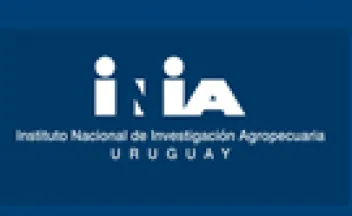Effect of fertilization history on p fixation. [abstract]

The specific objective is to study the effect of previous P fertilization on P fixation according to soil type.

The specific objective is to study the effect of previous P fertilization on P fixation according to soil type.

This study investigates the co-inoculation of soybeans with rhizobia and PMB Bacillus strains with and without addition of P fertilizer on plant P uptake and crop yield.

Pasture response to N fertilization and the nitrogen use efficiency (NUE) is highly conditioned by the phosphorus (P) availability and soil water. The objective of the study was to evaluate the effect of NP fertilization on the NUE of annual ryegrass, in two growth periods.

Current sustainability challenges of production systems require comprehensive answers with a multidimensional approach. The objective of this study is to select indicators that allow quantifying the productive-economic, social, and environmental evolution of dairy systems transitioning towards agroecology through a co-innovation approach.

Nutrients deficiencies - mainly phosphorus (P) and nitrogen (N) - often depress forage productivity (FP) in pasture-based systems in the Pampas region (Argentina). Fertilizations are often used to attenuate these deficiencies, but it is necessary to increase the use efficiency of the applied nutrients.

Uruguayan dairy farms underwent an important intensification process during the last decades. Although pasture-based grazing systems are still dominant, one important component of such intensification is the increase of extra-farm feed inputs, along with an increased stocking rate and an increased supplementation rate per cow.

Several actions have been carried out in the Santa Lucia River basin (1.343.300 ha) in order to reduce the impact of anthropogenic pressure and improve water quality. Environmental models may be used as supportive tools when assessing the effect of local actions at a basin scale.

Sustainability of water quality and quantity in Merín Lagoon (ML) basin has become an issue of concern, recognizing nutrient runoff from agricultural environment as one of the major sources influencing water impairment. The main area of rice cultivation in Uruguay is located in this watershed.

Integrated rice-livestock systems were key for a sustained yield increase with decent resource-use efficiency and environmental indicators during 50 yrs. in Uruguay. The increased trends for intensification in cropping systems may prompt rice-livestock systems for decoupling and losing synergies. We summarize evidence about the sustainability of rice-livestock systems in Uruguay using indicators from farm data and a long-term experiment.

The aims of this study were to assess the long-term effects of different CPR on SOC stocks on the subsoil, and to draw conclusions about the capacity of CPR to sequester C in Uruguay.We conclude that incorporating pastures in continuous crop sequences increased soil organic carbon stocks through the soil profile by an average of 28%.